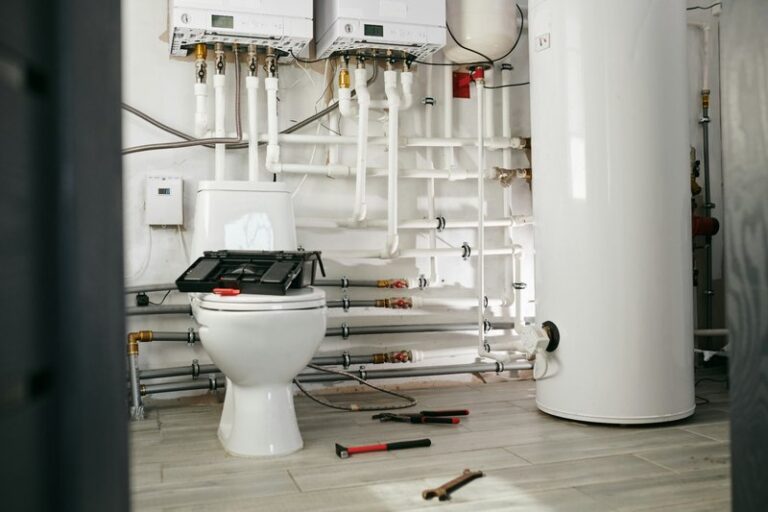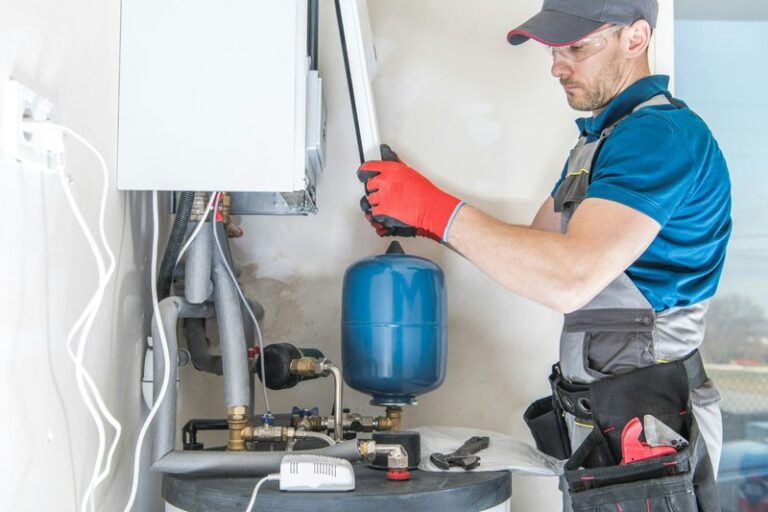Dry skin, cracked wood floors, static electricity, and persistent winter coughs are all signs your home’s indoor air is too dry. During colder months, the air outside contains less moisture. When this dry air enters your home through heating systems, it reduces humidity levels indoors. A whole-home humidifier can help maintain balanced humidity throughout your entire home, improving comfort, air quality, and overall health.
At Midwest Comfort, we offer expert installation and maintenance services for whole-house humidifiers to homeowners throughout the region. If you’re looking to improve your indoor air quality and energy efficiency, please call us at (847) 338-2777.
What Is a Whole‑Home Humidifier?
A whole‑home humidifier is a device installed directly into your heating and cooling system to regulate indoor humidity throughout your entire home. Unlike portable humidifiers that only treat one room, whole-home units add moisture directly into the air as it travels through your HVAC ductwork, evenly distributing humidity to every room.
By attaching to your furnace or air handler, these systems maintain consistent humidity levels that are automatically adjusted according to the season, temperature, and your preferred settings. They are ideal for cold-weather regions where homes tend to get too dry during heating season.
Types of Whole‑Home Humidifiers
There are three primary types of whole-house humidifiers, each with its own features and advantages:
1. Bypass Humidifiers
Bypass systems draw warm air from your furnace and pass it over a water panel or evaporator pad. The air picks up moisture and is circulated through your ductwork. These are cost-effective and energy-efficient but require the furnace to be running for optimal performance.
Best for: Homes with existing ductwork and moderate humidification needs.
2. Fan-Powered Humidifiers
These units function similarly to bypass models but include an internal fan that forces air through the water panel, independent of your HVAC system. This allows for greater humidity output and flexibility.
Best for: Larger homes or those with higher moisture requirements.
3. Steam Humidifiers
Steam humidifiers heat water to create steam, which is then injected directly into your ductwork. They offer precise humidity control, can operate independently of the heating cycle, and work efficiently in larger or drier environments.
Best for: Homes with high square footage or homeowners who require precise humidity control.
How a Whole‑Home Humidifier Works with Your HVAC System
Once installed, a whole‑house humidifier uses water from your home’s plumbing and distributes moisture through your ductwork. A built-in humidistat (similar to a thermostat) monitors indoor humidity levels and turns the humidifier on or off to maintain optimal conditions.
During dry winter months, these systems:
- Pull warm air from your furnace
- Pass it over a water-saturated pad or release steam
- Deliver humidified air through your home’s ducts
When paired with smart thermostats or home automation systems, they can provide efficient, on-demand humidity control without any manual adjustments.
Why Is Indoor Humidity Important?
Humidity isn’t just about comfort—it plays a vital role in your home’s health, energy efficiency, and longevity.
Optimal Indoor Humidity Range: 30%–50%
Maintaining humidity within this range provides numerous benefits:
Health Benefits:
- Reduces dry skin, nosebleeds, sore throats, and respiratory discomfort
- Helps alleviate asthma and allergy symptoms
- Reduces airborne virus transmission (studies show viruses thrive in dry environments below 40% RH)
Home Protection:
- Prevents cracking and warping in wood flooring, furniture, doors, and window frames
- Preserves musical instruments, artwork, and electronics
- Minimizes static electricity
Energy Efficiency:
Humid air feels warmer, allowing you to lower your thermostat and reduce heating costs by 3–5%
Maintenance and Upkeep
To keep your system running efficiently, regular maintenance is essential. At Midwest Comfort, we recommend the following:
- Annual Service Check: Clean the humidifier, replace the water panel or cartridge, and inspect the drain line.
- Replace Filters: Dirty HVAC filters can impact performance—check and replace every 1–3 months.
- Seasonal Adjustment: Turn off the humidifier during summer months to prevent moisture buildup.
How Much Does a Whole‑Home Humidifier Cost?
Installation costs vary based on system type and home size, but here’s a general breakdown:
- Bypass humidifier: $500–$700
- Fan-powered humidifier: $600–$800
- Steam humidifier: $1,000–$2,500+
While the upfront cost may seem high, most homeowners find the long-term savings on energy bills and home repairs justify the investment. A well-installed system can also increase home value and HVAC performance.
Is a Whole‑Home Humidifier Right for You?
If you live in a region with long, dry winters (like much of the Midwest), you’ve probably experienced low humidity symptoms. A whole-house humidifier might be the solution if you:
- Experience dry skin, nosebleeds, or sinus irritation
- See cracking wood or static shocks around your home
- Use a portable humidifier in multiple rooms
- Want to improve air quality and energy efficiency
Still not sure which system is right for you? Our licensed technicians at Midwest Comfort can assess your home’s needs, explain your options, and provide expert recommendations.
Contact Midwest Comfort Today
Whole‑home humidifiers are one of the most overlooked but impactful HVAC upgrades for improving indoor comfort. Whether you’re looking for a simple bypass system or a high-performance steam humidifier, Midwest Comfort is here to help.
We proudly serve homeowners throughout the Midwest with:
- Expert humidifier installation
- Affordable HVAC upgrades
- Preventive maintenance and system optimization
Call us today at (847) 338-2777 to schedule a consultation or request a free estimate.



